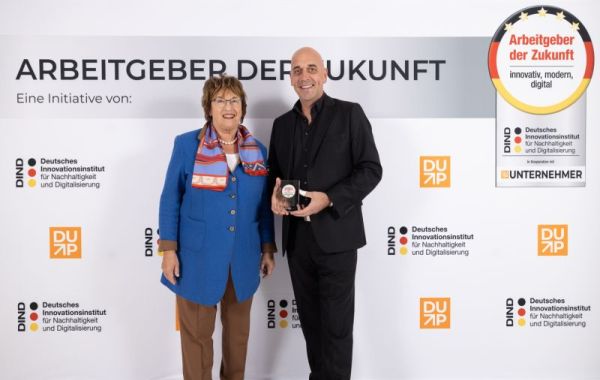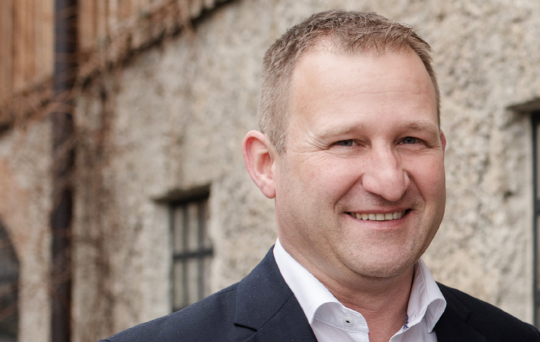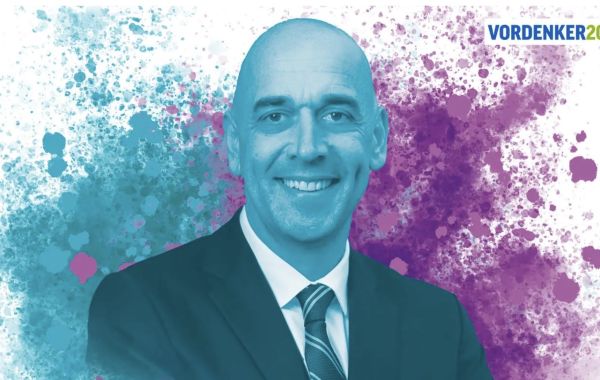Have any questions?
+44 1234 567 890
Ideas, new trends and exciting projects around the topic of IT and telecommunications
Get exciting insights into our daily work and stay up to date with the latest technology our industry can offer you. We invite you to delve more into the topic of 5G and the meaning of various buzzwords. Furthermore, we will provide you with insights into real projects and use our blog to show you ways in which digitalization can leverage potential in your company.
Who can give me a neutral opinion on 5G campus networks?
Bayerische Funknetz GmbH (BAYFU) acts as an independent and neutral consulting and service company. Its many years of experience, coupled with in-depth specialist knowledge, form the basis for being able to advise companies in line with their needs.
Industry is facing demanding challenges in terms of digitalization and automation. In contrast to established technologies such as LTE, WiFi, WLAN, LAN, LORAN, Bluetooth, etc., 5G technology offers advantages in many areas. Real-time applications, the management of a multitude of sensors from the IoT, the massive data throughput, network security and availability as well as virtualization offer massive advantages in terms of flexibility, dynamics and individuality. As an infrastructure solution, 5G helps to ensure that your applications can be processed in a highly agile and customized manner based on technical standards.
5G has officially been launched, but is still undergoing development and is expected to be fully available in 2023. This means that the relevant three releases 15, 16 and 17 have been described by the standardization body 3GPP and have been introduced as a standard or will be in the near future. The further development of 5G NSA (non stand-alone) to 5G SA (stand-alone) is also decisive, as a significantly broader mass of hardware and software will then be available at reasonable conditions. During 2020 to mid-2021, most manufacturers will have 5G SA components in their portfolio. 5G campus networks can thus be planned and set up immediately and adapted step by step to the new requirements and developments.
- Network access: A wide variety of technologies (wireless, wired, and optical) work
functionally together.
- Elasticity: 5G is IT. This means that the networks are dynamically configurable. Additions of new operating sites or the introduction of new processes should be automated to the highest degree. Through virtualization, resources are dynamically provisioned where they are needed.
- Performance: Network slicing provides controllable connections with predefined quality for all supported applications.
- Availability: Production-critical applications can be specially protected against production-relevant applications. Availability levels of 99.999% are possible.
- Security: 5G as part of the IT environment should at least meet the same security standards. Due to the SIM-based authentication mechanisms, the profile management of all users based on them, and the network architecture, 5G contributes significantly to minimizing security risks.
- Scalability: The possibilities of the network architecture and its virtualization provide the basis for integrating new extensions in an agile and future-proof manner. 5G is the optimal basis for organic growth
There are public 5G networks offered by the established mobile network operators. In addition, since 2019 there has been the possibility in Germany for companies to set up and operate their own mobile networks, completely detached from the mobile network operators. These will then be known as private campus networks. A large number of manufacturers, suppliers and service providers offer products and solutions for implementing private campus networks. It therefore depends on how you want to implement 5G in your company. As TurnKey solutions based on a public 5G mobile network or in which you want to become a mobile operator yourself within the framework of your private 5G campus network.
A campus network is understood as a geographically limited, local mobile network adapted for special requirements such as industrial communication. 5G technology can be used here. This flexibility makes it possible to meet the highest requirements for quality of service in terms of latency, reliability and availability of the communications networks. 5G campus networks are also characterized by the fact that they can be operated separately from the public network, and thus completely isolated. High-security interfaces offer the possibility of creating a connection to public networks in order, for example, to grant your suppliers controlled access to their applications. This is made possible by obtaining dedicated and exclusive radio frequencies from the responsible regulatory authority (e.g. BNetzA). Campus networks can be highly customized and developed to meet your needs based on technological standards. This makes campus networks attractive for applications in various industry sectors and thus provides the basis for digital transformation.
The applicationcase-related requirements should define the technology selection. There is no blanket right or wrong, even if the trend is strongly in favor of mobile communications (5G) and WiFi is increasingly being questioned. Professional cellular networks, as the primary data infrastructure, create new capacity and offload WiFi systems. In addition, the foundation can be laid to meet the digitization requirements of this decade.
Through a sound needs analysis, BAYFU can support you in developing, defining and also implementing the most suitable technology concept for your use cases.
High-level comparison of common industrial radio networks
Many countries around the world offer the option of operating private campus networks in addition to public mobile networks. These are, for example, Germany, Great Britain, USA, etc.
As a rule, frequency allocation is carried out by the regulatory authority (e.g., the Federal Network Agency) on the basis of an application procedure. In addition, the legal provisions regarding the operation of fixed radio systems must be observed.
There are public 5G networks offered by the established mobile network operators. In addition, since 2019 there has been the possibility in Germany for companies to set up and operate their own mobile networks, completely detached from the mobile network operators. These will then be known as private campus networks.
It depends. A blanket statement is not possible. Based on the respective application, a comparison at eye level is necessary. It is important here that the same decision parameters are used in each case. As a rule, it can be seen that the TCO is better with 5G in classic use cases in the industrial environment.
5G is IT! No in-depth telecommunications knowledge is required to operate a 5G network. Anyone who masters their IT, either directly themselves or indirectly through service providers, is in a position to operate their own private 5G network.
Ultra-Reliable and Low-Latency Communication (uRLLC) establishes highly reliable connections with low latency between transmitter and receiver. The high reliability (Ultra Reliable) and low latency (Low Latency) are the prerequisites for applications that place high demands on the availability of the signal and the signal runtimes - keyword real-time communication. URLLC will be described in the 3GPP Release 16 standard.
Enhanced Mobile Broadband (eMBB) is a 3GPP Release 15 service category that provides extremely high data rate and supports applications with high data throughput requirements. In this context, 4K, 8K video technology , virtual reality (VR) and augmented reality (AR) are priorities.
Bei massive Machine-Type Communication (mMTC) geht es um Dienste, die eine hohe Anschlussdichte benötigen. Diese kann bei einer Million MTC-Komponenten pro Quadratkilometer liegen. In der Industrie fallen typischerweise das Management von IoT Geräten (z.B. Sensoren) darunter. Ferner wird auf dieser Dienstekategorie nach 3GPP Release 17 auch das Engergiemanagement drastisch verbessert was zu Batterielaufzeiten von bis zu zehn Jahren führen kann.
5G is the successor technology to 4G or LTE. Private mobile networks or campus networks can be implemented in both 4G and 5G. Depending on the requirements to be met, it is often sufficient to start with an upgradeable 4G campus network. Should the need for 5G-specific parameters develop over the years, upgradeable 4G networks can be partially upgraded to 5G as needed without having to substitute all facilities. This makes it possible to use hybrid 4G/5G networks to operate the digital ecosystem cost-effectively and with high performance. It therefore depends very much on the individual requirements of the respective company which technology makes the most sense. 4G has the advantage that significantly more devices and solutions are available on the market at more favorable conditions than is the case with 5G (as of 2020 / 2021).
There are a large number of established and new suppliers for all components of a mobile network on the market. According to your specifications or driven by the specific requirements, the suitable suppliers can be selected. Here it makes sense to work with consultants who have access to these suppliers.
There are a large number of established and new suppliers for all components of a 5G network on the market. According to your specifications or driven by the specific requirements, the suitable suppliers can be selected. Here, it makes sense to work with consultants who have access to these suppliers.
5G is IT! No in-depth telecommunications knowledge is required to operate a 5G network. Anyone who masters their IT, either directly themselves or indirectly through service providers, is in a position to operate their own private 5G network.
Laws, ordinances and regulations apply on the basis of science and technology in the respective countries. For Germany, for example, the following applies: "The personal protection limits to be applied to radio equipment are specified in the 26th Ordinance to the Federal Immission Control Act (26. BImSchV). These limits correspond to the international limit value recommendations of ICNIRP and thus also to the recommendation of the EU Council of 12 July 1999 on the limitation of exposure of the general public to electromagnetic fields (0 Hz - 300 GHz) (1999/519/EC).
Well-founded consulting deals primarily and at an early stage with the question of the operator model. In principle, four models have been identified. From the "as-a-service" turnkey solution, where the entire chain, including operation of the mobile network, is placed in the hands of a service provider, to the "in-house solution", where the company takes care of all aspects itself. There are variations in between. It depends on what goals and business models your company is pursuing and what digitization strategy is being pursued.
Bayerische Funknetz GmbH (BAYFU) acts as an independent and neutral consulting and service company. Its many years of experience coupled with in-depth expertise form the basis for being able to advise companies in line with their needs.
You did not find your question in the list?
Contact us now and we will be happy to answer your question.
Exclusive knowledge for your company
Get our free white papers.
Make your company fit for the decade.
Shaping the future now - 5G and IoT in logistics
Analysis of cost reduction with simultaneous efficiency increase through the use of driverless transport systems based on private 5G mobile networks (campus network)
Real projects
Information on real projects, proof of concepts and case studies. From the idea to the solution.
Europe's largest 5G campus network project
Case study by the Bavarian Ministry of Economic Affairs as part of "Bavaria talks about 5G".





